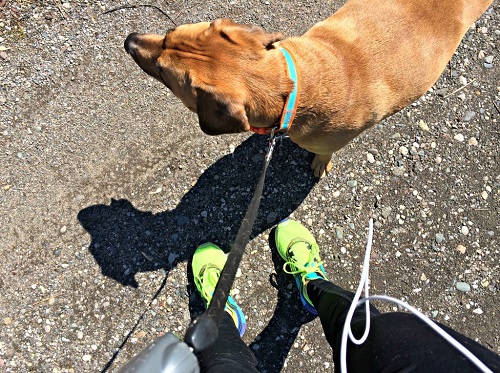As you probably assumed (this being a running column and all), I am a runner. To me running is everything I’ve written: a barometer that measures my wellness, a means of bonding, how I explore the world and challenge myself, perhaps even my life partner.
But there’s something I love just as much: walking. Whereas with running part of the appeal is the challenge—the work of it—walking is the slowed-down, relaxed version, where I feel stress unfurl. It dissipates the soreness and stiffness that linger from sitting too long or running too hard, giving both my body and my mind space to meander.
During the pandemic, walking became a habit I craved: a chance to move, leave the house (!!), and be alone (!!!). I sought out leisurely evening walks, brisk strolls to the mailbox, laps around the block with my kids, gently curving uphill hikes. At peak lockdown I found myself going for walks as many as three times a day.
What is it about walking that’s so appealing, and how can walking benefit runners? I asked these questions of Jonathan Hook, physical therapist and Whitworth University’s Director of Clinical Education.
First, it’s akin to running, but gentler. With its very similar movement patterns but overall less impact, “running is very much an extension of walking,” Hook says. Compared to jogging, which exerts as much as 1.6 times the force on the body at the same speed (Hook cites Lohman, 2011), running is easier on the body, making it ideal for recovery. “In walking you still get the dynamic rhythmic activity involving the major muscle groups without the same level of pounding and risk of training error that lead to injury.”

“Prolonged bouts of strenuous exercise can…lead to overuse injury,” Hook says. “Beyond that, overtraining can negatively impact the immune system or cause chronic inflammation” (Mikkelsen, 2017). And including low-impact activities helps with general health.
When we think of our overall health, it’s important to consider more than physical strength or endurance. “Walking can be a great low risk or ‘recovery’ form of exercise that can also positively affect mood states such as anxiety, stress, and depression,” Hook says. “The body of literature continues to grow showing how many forms of exercise have positive effects on multiple systems, including decreased risk for obesity, diabetes, and heart disease, and increased mood, life-satisfaction, and cognitive performance” (Bailey, 2018).
There’s also plenty of anecdotal evidence to support a regular walking habit. “I think there is a reason that many of the most brilliant minds were walkers,” says Hook, listing among them Thoreau, Kierkegaard, and Nietzsche.
That mind-body connection reminds me of the novels formative to my youth (Austen, the Brontës, L.M. Montgomery), where scene after scene took place during long walks on tree-lined lanes and windswept moors. More recently I’ve been intrigued by the walking habits of David Sedaris and poet Mary Oliver, both of whom built hours of it into their everyday lives (which essayist Sedaris has written about to hilarious effect).
Hook, a runner, likes the counterbalance of walking for reasons similar to mine. “For me, walking puts me in a completely different mindset. I find myself more likely to be present, aware, prayerful, reflective, etc… As a physical therapist or movement system expert, there is something beautiful and rhythmic about walking that is restorative.”
Running and walking feel to me like two sides of a coin: pushing on the gas vs. coasting, the clenched muscle vs. the active release, a free and creative mind vs. a burst of conscious effort. I wouldn’t want one without the other.
Sarah Hauge writes Out There’s “Run Wild” column. She wrote about strategies for loving winter running in the last issue.














